DOI:10.32604/iasc.2022.025637

| Intelligent Automation & Soft Computing DOI:10.32604/iasc.2022.025637 |  |
| Article |
Energy Efficient Clustering and Optimized LOADng Protocol for IoT
1Department of Electronics and Communication, New Horizon College of Engineering, Bangalore, 560103, India
2CMR Institute of Technology, Bangalore, 560037, India
3Department of Electronics and Communication, SRM Institute of Science and Technology, Kattankulathur, Chennai, 603203, India
*Corresponding Author: Divya Sharma. Email: divyasharmaphd69@gmail.com
Received: 30 November 2021; Accepted: 07 January 2022
Abstract: In recent years, the use of Internet of Things (IoT) devices has increased exponentially due to the advancement of information and communication technologies. Wireless sensor networks (WSNs) are vital in the development of IoT and include low-cost smart devices for data collection. However, such smart devices hold some restrictions in terms of calculation, processing, storage, and energy resources. With such constraints, one of the primary difficulties for the WSN is to achieve the lowest possible energy consumption across the network. This article aims to develop an Energy-Efficient cluster-based Lightweight On-Demand Ad hoc Distance Vector Routing Protocol–Next Generation (LOADng) routing protocol in IoT to maximize network life by reducing the power consumed by each sensor. The proposed approach consists of three stages: cluster formation followed by appropriate selection of cluster head (CH) and finally routing. In this approach, initially, clusters are created using the k-means clustering algorithm. Then CHs are optimally selected using a seagull optimization algorithm (SOA). After the CH selection process, routing is done using the optimal LOADng protocol. The efficiency of the proposed approach is evaluated using different assessment metrics. Also efficiency of this approach is compared with existing algorithms.
Keywords: IoT nodes; LOADng protocol; black window optimization; wireless sensor network; seagull optimization algorithm; cluster head; cluster member
The WSN is a developing system of sensing nodes (SNs) that detects several parameters, like weather information, from a specific region and sends it to the base station. SN controls the properties for sensitivity, correspondence, and processing [1]. Energy efficiency of SN in this way is a significant issue in the WSN. Sink motion detection is a great way of regulating energy consumption at WSN [2]. Portable Sync is used to categorize data by following an erratic path. The Internet of Things (IoT) is a pervasive system. WSN now connects with IoT applications such as medical services, environmental monitoring, smart homes, contemporary buying applications, and agribusiness [3]. A typical example is an IoT-based smart irrigation system incorporated with numerous sensors for data gathering and setting up irrigation schedules accordingly [4]. Typically, the SN has a handling unit that has a limited range and minimum computational power. As a significant part of IoT, WSNs are classified as a diversified organization due to their ability to gather information from the climate and rapidly fill research interest [5]. The rapid setup and arise of new gadgets have enabled the usage of IoT by a handful of companies to build heterogeneous systems [6].
In WSNs, the energy and processing efficiency of the sensors is low, so an efficient panel method must be found to reduce power consumption. However, this is not enough for most WSN applications. Because sensitivity coverage and network connectivity are two major variables that affect a WSN's performance and capabilities, designed techniques should also take into account how to balance power consumption to ensure network coverage. In other words, finding a shorter contact channel to reduce power consumption would be beneficial, but it would mean that the nodes positioned along these paths would be overused. The probability of coverage gaps grows when the energy of these nodes drops rapidly [7].
WSN planning is complicated by the fact that sensor modules contain restricted energy, controlled power, and memory [8]. A few energy-efficient steering traditions have been proposed in writing to manage the restricted battery life of sensor modules to extend enterprise life. Smart energy systems, using solar energy, wind energy, etc., are evolving as solutions for sustainable, eco-friendly, long-term, and cost-effective energy regeneration [9]. Developed by several experts to accomplish energy-efficient grouping [10], for example, the Low-energy adaptive clustering hierarchy (LEACH) leaches the sensing center autonomously by grouping. In this CHs are transmit the data within the organization. Energy is enhanced and stored by generating global information. As of late, the Artificial Intelligence (AI) [11] strategy is used to choose optimal cluster center of the bunching approach like GA (Genetic Algorithm) [12], Gravitational Search Algorithm (GSA) [13], and PSO (Particle Swarm Optimization) [14] individually.
The main purpose of the proposed approach is to improve the energy efficiency of the IoT network based on clustering through the LOADng routing protocol. In this paper, initially, the cluster is formed using a k-means clustering algorithm. Then, CHs are optimally selected by using SOA. Then, to reduce the traffic, the routing is performed using the LOADng protocol. The parameter present in the LOADng protocol is optimally selected using the black widow optimization (BWO) algorithm. Contributions of the paper are described as follows,
❖ Initially, the clusters are formulated using a k-means algorithm, in which we can able to reduce the transmission time and delay.
❖ For CH selection, the SOA is presented. In this method, the power consumption and the distance between the CH and the base station are considered as the objective function for selecting CH.
❖ To further increase energy efficiency and reduce network latency, a path is established between the non-CH and base station using the black widow optimization (BWO) algorithm-based LOADng routing protocol.
❖ The efficiency of this approach is estimated based on energy consumption, network lifetime, delivery ratio, overhead, and delay.
The rest of the paper is arranged as follows; Part 2 provides a comprehensive review of recent research on energy-efficient routing in the WSN and is discussed in Section 3 of the Energy Model. The proposed routing mechanism is clearly explained in Section 4 and the test results are analyzed in Section 5. The end section is presented in Section 6 of the Paper.
Numerous researchers had developed IoT sensor-based routing on WSN. Among them some of the works are discussed here; Sathya et al. [15] The WSN-assisted IoT system aim to develop energy-efficient routing to increase network life and reduce energy consumption. To achieve this objective, the author developed clustering with adaptive fuzzy regulation. The routing was developed based on immune-induced optimization algorithm to improve data delivery reliability. The cluster head was formed based on the quality of service (QoS) and node location. The results section clearly showed, this approach was improved the QoS parameters.
In IoT applications, WSN is mainly utilized. The author Shalli et al. [16] had presented a dynamic clustering approach based on smart transportation, smart city, and smart grid. This method has improved the throughput and reduces energy consumption. Amol et al. [17] had aimed to develop energy-efficient routing on WSN using IoT-SNs. To achieve this concept, a gravitation search algorithm was presented. The fitness function has been designed distance, lifetime, delay, and energy. The algorithm was ensuring the maximum lifetime of the network.
Although WSN is used in a variety of applications, the network suffers from an energy-hole problem. Jayakumar Jain [18] created a coverage-hole detection and recovery system to avoid this issue. They used dynamic clustering and a bi-layered WSN architecture to achieve this goal. The K-means technique was used to cluster the data in this case. CH was chosen for its high energy activity and short travel distance. For successful packet transfer, the coverage-hole identification and recovery technique was applied. An efficient entropy function was utilized in the detection process. The coverage location is characterized here by three locations: the inside of the cluster, the cluster, and the network edge. Finally, the Multi-Objective Emperor Penguin Optimization Algorithm (MO-EPO) was used to transmit data.
Prachi et al. [19] aimed to develop energy-efficient routing on the WSN to reduce power consumption and increase network life. For selecting the CH they were used the butterfly optimization algorithm (BOA) this reduced the computation complexity and energy consumption. The remaining energy and the average distance accounted to select CH. Finally, the transmission path was selected by Ant Colony Optimization (ACO). This algorithm selects the optimal path based on distance, residual energy, and node degree.
Vinita et al. [20] had the objective to develop a security and energy-based route. To achieve this concept, the Taylor-based Salp Swarm Algorithm (C-SOA) was introduced. They constructed the cluster using the LEACH algorithm. The routing was then done using Taylor-C-SOA, which increased the network lifetime. Suresh Kumar et al. [21] used the exponentially-Ant Lion Whale Optimization Algorithm (E-ALWO) to design energy-efficient routing in the WSN. They created a multi-objective fitness function for path selection that took into account aspects like distance function, energy consumption, delay time, and trust value. Finally, they used E-ALWO to determine the best way for data transfer, and that path was used.
Energy is an important parameter for the entire IoT-SNs present in the network. In the network, each IoT SN has its initial energy E0 but cannot recharge the energy of the IoT nodes. The Nth non-CH IoT nodes are transmitting the packets to the mth CH. During packet transfer, the power loss of each packet follows the multipath fading pattern and free space. The transmitter side energy dissipation is estimated using a power amplifier and radio electronics, and radio electronics are used to calculate the receiver's energy catering. There are two power models to send the Ps size packet to the recipient. In the first case, data transmission is carried out based on the distance between IoT nodes and other nodes. The second is based on the nature of the node belonging to the normal node or the CH. When a normal node (IS) transmits PS bytes of data, the energy scattering of the normal node is expressed below,
EScatt(IS)=Eelec∗PS+EPa∗PS∗‖IS−CC‖4;if‖IS−CC‖≥Th (1)
EScatt(IS)=Eelec∗PS+EFs∗PS∗‖IS−CC‖4if‖IS−CC‖<Th (2)
Th=√EFsEPa (3)
where;
Eelec→ Electric energy
PS→Packet size
IS→Normal IoTSN
CC→ Cluster head
EPa→Multi-path fading energy
EFs→ Free space energy
Th→ Threshold
‖IS − CC‖→Distance between a normal node and cluster head
The electronic energy is calculated as follows;
Eelec=ETx+EAgg (4)
where; ETx is represented as transmission energy, EAgg is represented as data aggregation energy.
When CH receives Ps bytes of data from IoT's SN and given the energy scattering of the CH node,
EScatt=Eelec∗PS (5)
After receiving and transmitting Ps byte of data, Energy updation of each normal IoT node (Ea+1 (IS)) and cluster head (Ea+1 (CC)) is calculated as follows;
Ea+1(IS)=Ea(IS)−EScatt(IS) (6)
Ea+1(CC)=Ea(CC)−EScatt(CC) (7)
The data transfer process between the nodes continues until each node is a dead node. One node has less energy than zero, which is called the dead node.
4 Hybrid Bio-Inspired Meta-Heuristics Algorithms for Energy Efficient Cluster-Based LOADng Routing Protocol
The clustering-based LOADng routing protocol is given to optimize energy efficiency on the IoT network. SNs are first clustered using the k-means clustering technique. Using SOA, CH is nominated for each group/cluster after the clustering procedure. The algorithm chooses the CHs based on objective functions such as residual energy and the distance between the CH and the base station to collect data from non-CH members. CH will send the obtained data to the base station. The optimized LOADng routing protocol is described for efficient routing between the CH and the base station. The BWO method is used to improve routing settings in this protocol. Fig. 1 depicts the overall framework of the suggested technique.
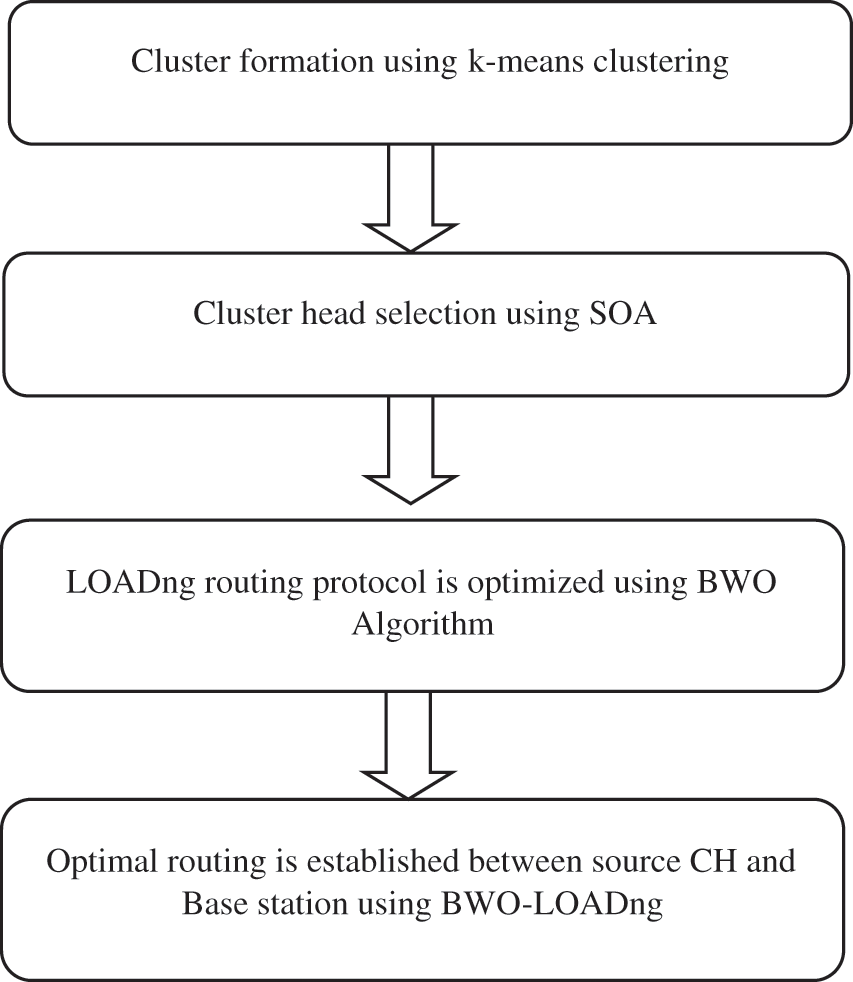
Figure 1: Overall structure of proposed approach
The WSN based IoT networks are comprised of n number of IoT sensors node (IS), cluster head (CC) and sink node or base station (SN). Each IS present in the communication region has its maximum communication radio range. Besides, each node has a separate ID and these nodes are grouped to form a cluster. The sink node collects the data packet from the IoT node which is present in the communication region or network. Similarly, the IoT node transfers data packets to the node using the CH mechanism.
Data transmission is an important achievement in WSN. For data transfer n numbers SNs are sorted approximately in the geographical area. The goal of SNs is to collect the information from the surrounding area and transmit it to the Base Station (BS). The delay is caused by an SN sending the collected data to each SN to send to the base station. Also, some SNs may die along the way due to low energy. If the node will die during the transmission, the whole data will be a loss. To prevent all of these problems, before transmission, the SNs are clustered. For cluster formation, the k-clustering algorithm is used. In this algorithm, the centroids values are randomly selected, and based on the minimum distance between the centroid and SN the clusters are formed. Steps involved in cluster formation using a k-means algorithm are given below:
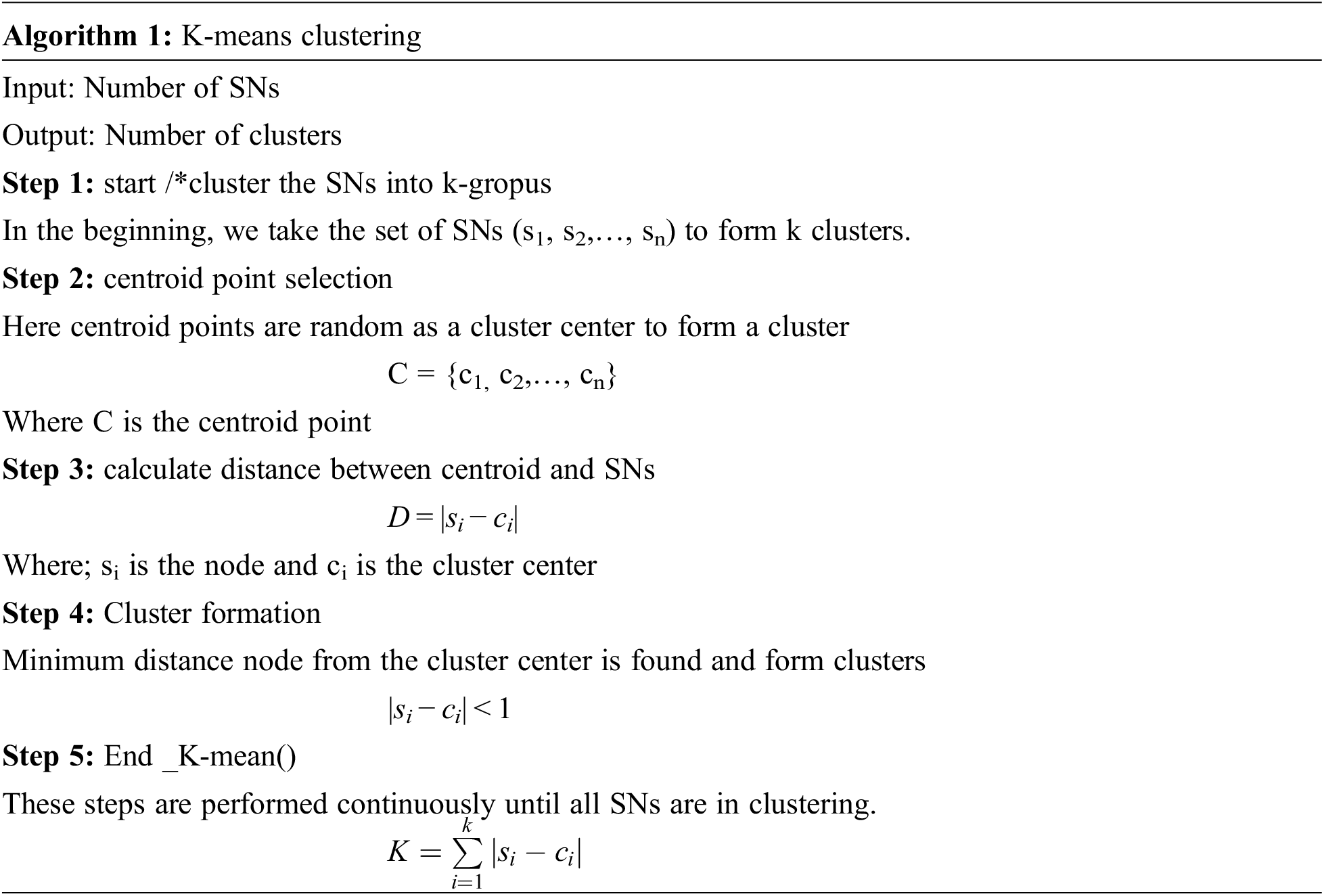
The selection of a CH is a key stage in WSN routing. Before broadcasting, the SNs are clustered to reduce network traffic and wait time. The k-means technique is utilized to construct clusters in this research. A centroid node and an n-number of member nodes are given in the cluster. SOA is used to identify the best cluster head for each cluster. CH is used to send sensitive data to the base station from each member node. In comparison to other nodes, the selected CHs should have more energy. The CH is in charge of a variety of tasks, including clustering, data collecting, and transmission. As a result, picking CH is crucial. In this study, SOA is introduced for CH selection. Seagulls, often known as seabirds, can be found all over the world. Seagulls come in a variety of sizes, shapes, and colors. These birds are extremely intelligent. They deal with two different approaches to catching fish and earthworms. They used bread crumbs to kill the fish, and their feet made a rain-like sound to assault the earthworms. Furthermore, these Seagulls have the unique ability to consume both fresh and saltwater. However, several animals are unable to do so. Sponges feature a handful of odd elements on their eyes that are designed to eliminate salt from their structure through beak apertures. Gulls, for the most part, live in colonies. They utilize their imagination to hunt for prey and to hunt for prey. The migratory and assault behavior of seagulls are the most important aspects of their behavior. Migration is defined as the movement of people and goods from one location to another. The migration pattern is described below;
• While migrating, they move in groups. To avoid collisions with each other, the seagulls stay away from each other
• In a colony, seagulls move towards the seagulls with eminent fitness.
• Depending upon the fittest seagulls, remaining gulls can adjust their position. based Seagulls often attack seabirds as they move from one place to another. During the attack, they can create their spiral natural-shaped movement. The algorithm is applied in our proposed CH selection process to find the fittest solution (i.e., optimal CH) based on the foraging behavior of Seagulls. Steps involved in CH selection are explained below;
Step 1: Initialization: In this approach, the CHs are considered as the solutions. Initially, the solutions are randomly initialized. Here, the CHs are called seagulls, and solutions are called an agent. The position of each seagullis updated based on the fitness function. The initial solution representation is given in Eq. (8).
SM={Si1,Si2,…,SiD} (8)
SiD={CH1,CH2,…,CHn}iD (9)
In the above equation, each value Si,D represents the location of ith seagull in Dth dimension.
Step 2: Fitness evaluation: At this point, the merits of each solution are evaluated. In this paper, CH is selected based on two objective functions. Objective function 1 (F1) is based on the average distance (AD) and objective function 2 (F2) is based on residual energy (RE). The distance between the CH and non-CH in addition to CH-BS distance should be minimal and residual energy of selected CH should be high compared to cluster members. The designed objective function should be minimum. The fitness function is given in Eq. (10).
Fiti(t)=α×F1+(1−α)F2,0<α<1 (10)
Objective function 1:
The average distance is considered as an objective function 1 (F1). Average distance is summed as the distance between CH-non to CH and CH to BS. The average system should be minimized. The average distance is can be calculated as follows;
Min(Fi)=n∑i=11m(m∑j=1d(N−CHj,CHi)+d(CHi,BS)) (11)
where, m –Amount of SNs in the sensing area
n–Amount of CHs to be chosen
N−CHj,CHi -Normal separation among CH and rest of the non-CH in the intra-cluster
CHi,BS → Distance between a BS and CH
Objective function 2:
The remaining energy is considered for objective function 2 (F2). The absolute remaining energy of all CHs ought to be expanded for electing the optimal CH. Objective function 2 can be calculated as follows;
min(F2)=1EnergyCHi (12)
where,
EnergyCHi →Total residual energy of all CHi
Using Eq. (10) the fitness of each artificial gull is calculated.
Step 3: Migration (exploration)
During the migration process, the seagulls are changing their position from one place to another. At this point, seagulls are must satisfy the following conditions.
An additional variable B is used to estimate the new search agent location to avoid conflicts between nearby search agents (SA). The new position of SA is calculated using Eq. (13).
SA=D×PA (13)
where SA represents the status of SA, indicates the current state of SA and D indicates the operating behaviour of SA at a given search location. The D is calculated using Eq. (14).
D=Fc−(y×(Fc/Maxiteration)) (14)
In Eq. (14), the FC is used to control the frequency of use of the variable D which is linearly decreased from FC to 0.
After avoiding a neighbor's conflict, SAs move in the direction of the best neighbours.
BA=A×(Pbs(y)−PA(x)) (15)
where; BA is defined as the position of SA, A is a random responsible value for balancing between surveys and exploitative assets. Then A is calculated using Eq. (16).
A=2×B2×rand (16)
where rand represents the random value [0, 1].
Finally, the SA updates its position based on the best search agent. The updating function is given in Eq. (17).
GA=|SA+BA| (17)
where GA is defined as the distance between the SA and best fit SA.
Step 4: Attacking (Exploitation)
In the migration process, the seagulls adjust the angle and speed of the attack. They utilize their wings and weight to sustain their height. While attacking the prey, vortex motion behaviour follows in the sky. This behaviour in u, v, w direction is described as follows;
u′=Rr×cos(k) (18)
v′=Rr×sin(k) (19)
w′=Rr×k (20)
Rr=p×ekq (21)
where Rr represents the radius value, k represented a random value [0 ≤ k ≤ 2π], p and q are the constant value. The position updating function is given in Eq. (22).
PA(y)=(DA×u×v×w)+Pbs(y) (22)
From Eq. (22), we obtained the best solution. The selected best solution is used for cluster head selection.
Step 5: Stopping criterion: The stop criterion is performed when the optimal solution is found or the count of repetitions has reached its maximum. When SOA terminates, the optimal CHs are found, which are then fed into the data transfer process. The CH using SOA algorithm is presented below;

4.3 Routing Based on BWO-LOADng Protocol
After the CH selection process, routing is done using the BWO-LOADng algorithm. The LOADng routing protocol is the softer version of the Ad-hoc On-demand Distance Vector (AODV) protocol concerning overhead. During data transmission on the network, this protocol minimizes the overhead and delay during transmission. As the LOADng protocol is the second version of the AODV protocol, it includes the basic operation and characteristics of AODV. The routing process includes the route discovery packets such as Route Requests denoted as Route Requests (RREQs) which are originated by the source device and Route Replies (RREPs) which are originated by the destination. Also, LOADng includes the unicast hop-by-hop forwarding of RREPs to the source. In this protocol, if the route between source and destination is failed to connect the communication, a local route repair message i.e., Route Error denoted as RERR message will be forwarded to the source. In the LOADng protocol, intermediary nodes are not allowed to respond to the RREQ even if they have active paths toward the destination. Only targets are allowed to respond to RREQ. Gratuitous RREPs can be eliminated while confirming loop freedom as RREQ or RREPsa single unique, monotonically increasing sequence number. This protocol never updates the precursor list. Thus, RERR is only forwarded to the source if the data packet fails to reach the next hop on the route. To enhance the performance of the LOADng, black widow optimization (BWO) is presented. Using this algorithm, the values of the parameters of LOADng protocol such as NET_TRANSVERAL_TIME, RREQ jitter, RREP_ACK_TIMEOUT, and ACTIVE_ROUTE_TIMEOUT are chosen optimally to plunge control overhead and delay.
The effectiveness of the proposed approach is analyzed in this section. The proposed approach is implemented using the MATLAB simulator Version 20a. In this implementation, 100 nodes are used. Data packets are sent at a rate of 500 kbps and the size of each packet is 512 bytes. For routing the data packet, the LOADng routing protocol is used. The simulation time for each approach is 100 secs.
Performance Analysis
The effectiveness of the recommended approach is analyzed in this section. The main contribution of this sheet is cluster formation and routing. LOADng's performance is rated based on network lifetime, energy consumption, delivery ratio, control overhead, and delay.
Performance Analysis Based on Network Life Time
In the WSN, network lifetime is one of the most important characteristics for data transport. This size is determined by the number of nodes that survived the transfer and the number of nodes that died. The terminal's full power will extend the network's life. Fig. 2 shows how the performance of the suggested technique varies with the number of nodes in the network. Fig. 2 shows that our proposed technique outperformed SOA-AODV and SOA-LOADng in terms of network lifespan. This is related to BWO-LOADng-based routing and SOA-based cluster building. Lesser nodes keep the network alive for as long as possible. As the number of nodes increases, the network's lifetime diminishes. In comparison to SOA-AODV and SOA-LOADng, the proposed approach has a high amount of energy, as shown in Fig. 2. The proposed technique achieved the longest network lifetime when compared to other methods due to the fast convergence capabilities of SOA and BWO based LONDng protocol parameter optimization.
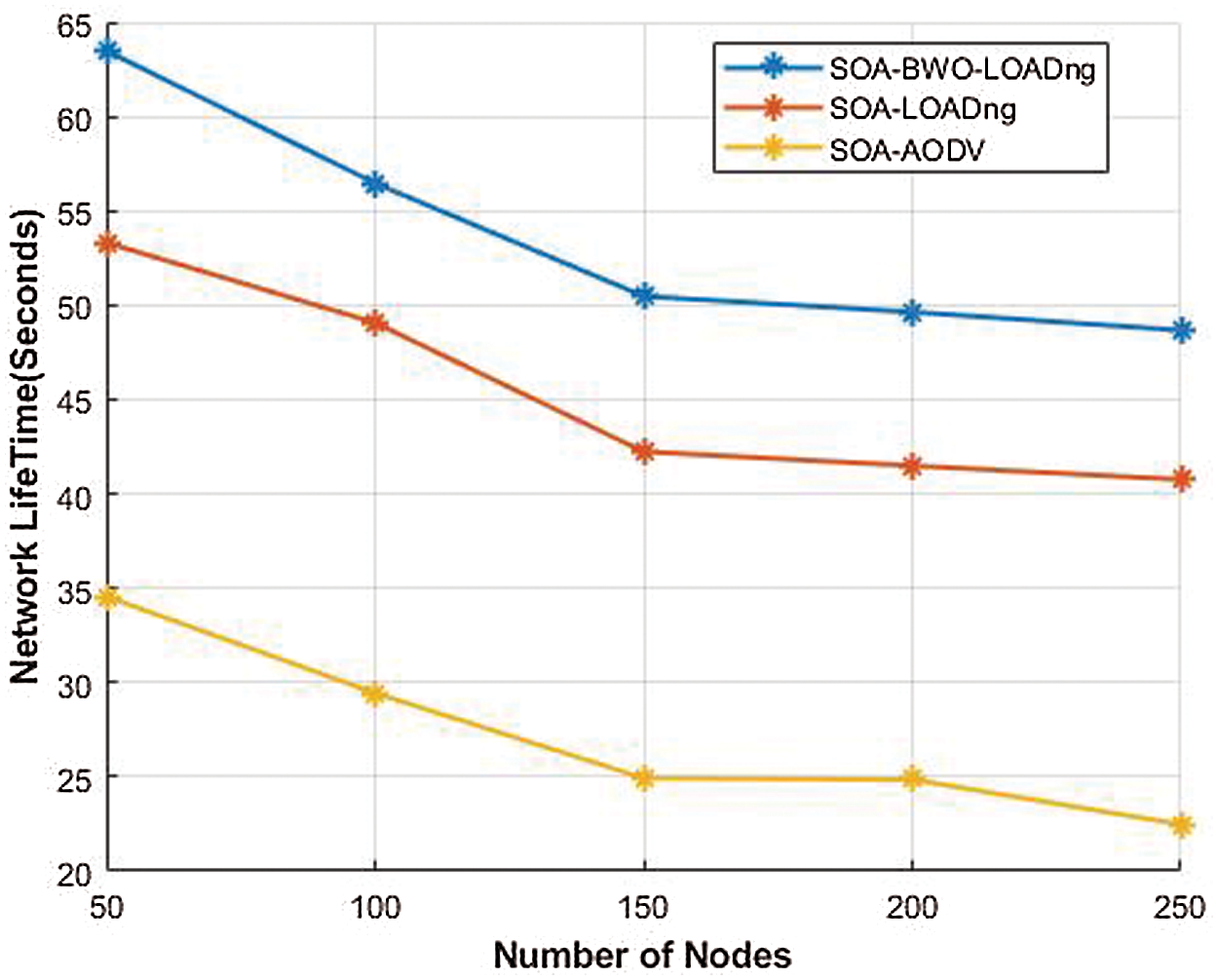
Figure 2: Performance analysis based on network lifetime for the different routing algorithms
Performance Analysis Based on Energy Consumption
Energy is an important parameter of every SN. If the energy of any node is lost during the transmission, the data loss occurs before reaching the destination. To avoid the problem, CHs are selected. The high-energy nodes are selected for the CH. A good network should consume less amount of energy during transmission. In Fig. 3, the efficiency of the suggested method is analyzed in terms of energy consumption. According to Fig. 3, it is clear that the proposed method uses less energy compared to the SOA-LOADng and SOA-AODV protocol.
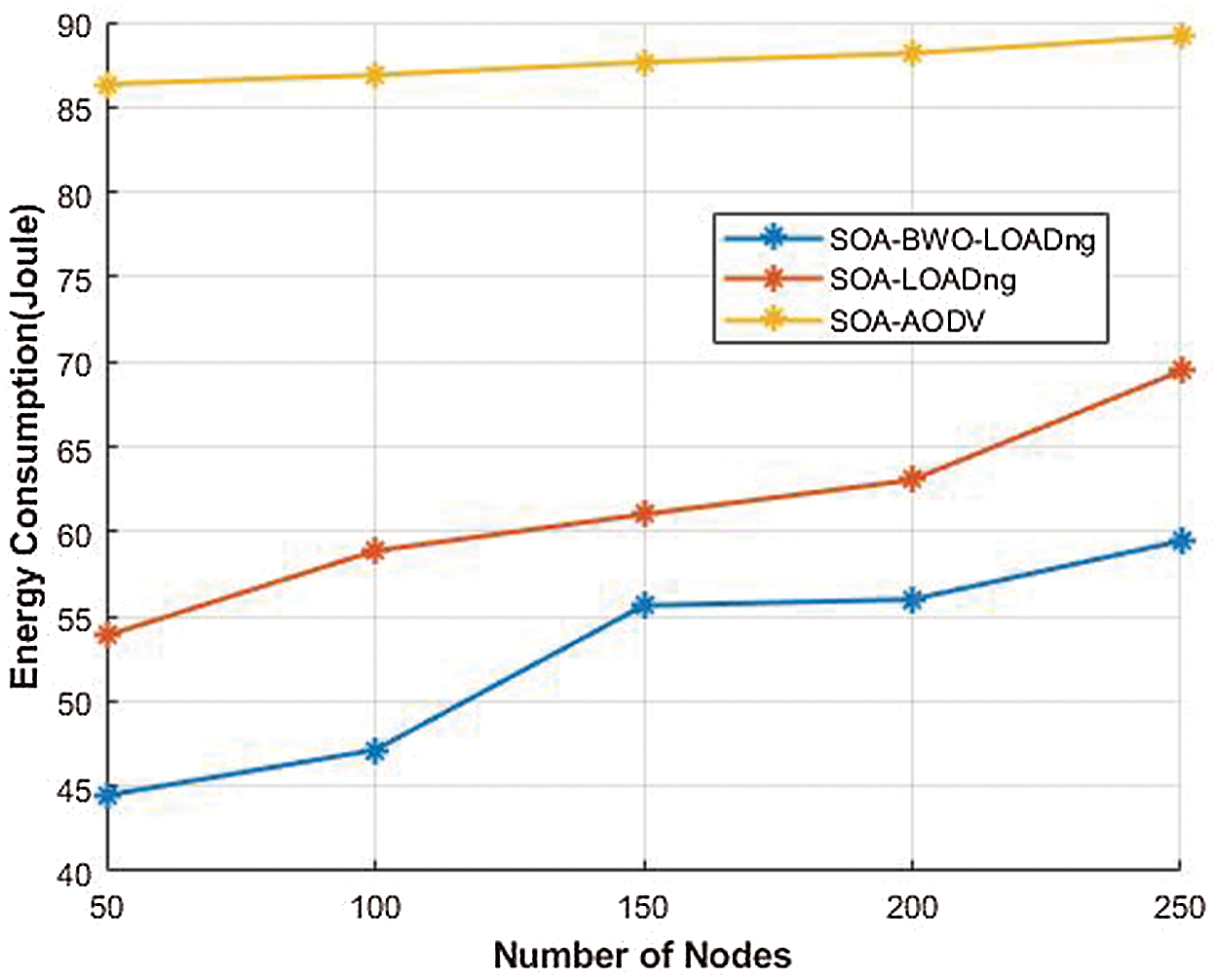
Figure 3: Performance analysis based on energy consumption for the different routing algorithms
Performance Analysis Based on Delivery Ratio
A good data transfer system should have a high packet distribution rate. Higher packet delivery rate increases transfer speed and save energy. Data delivery ratio of the different routing methods by varying number of the node is given in Fig. 4. When analyzing Fig. 4, the proposed method attain the maximum delivery ratio of 99.21% which is 96.2% for LOADng based routing and 82.26% for AODV based routing. Compared to AODV and LOADng, the proposed LOADng method attained better results.
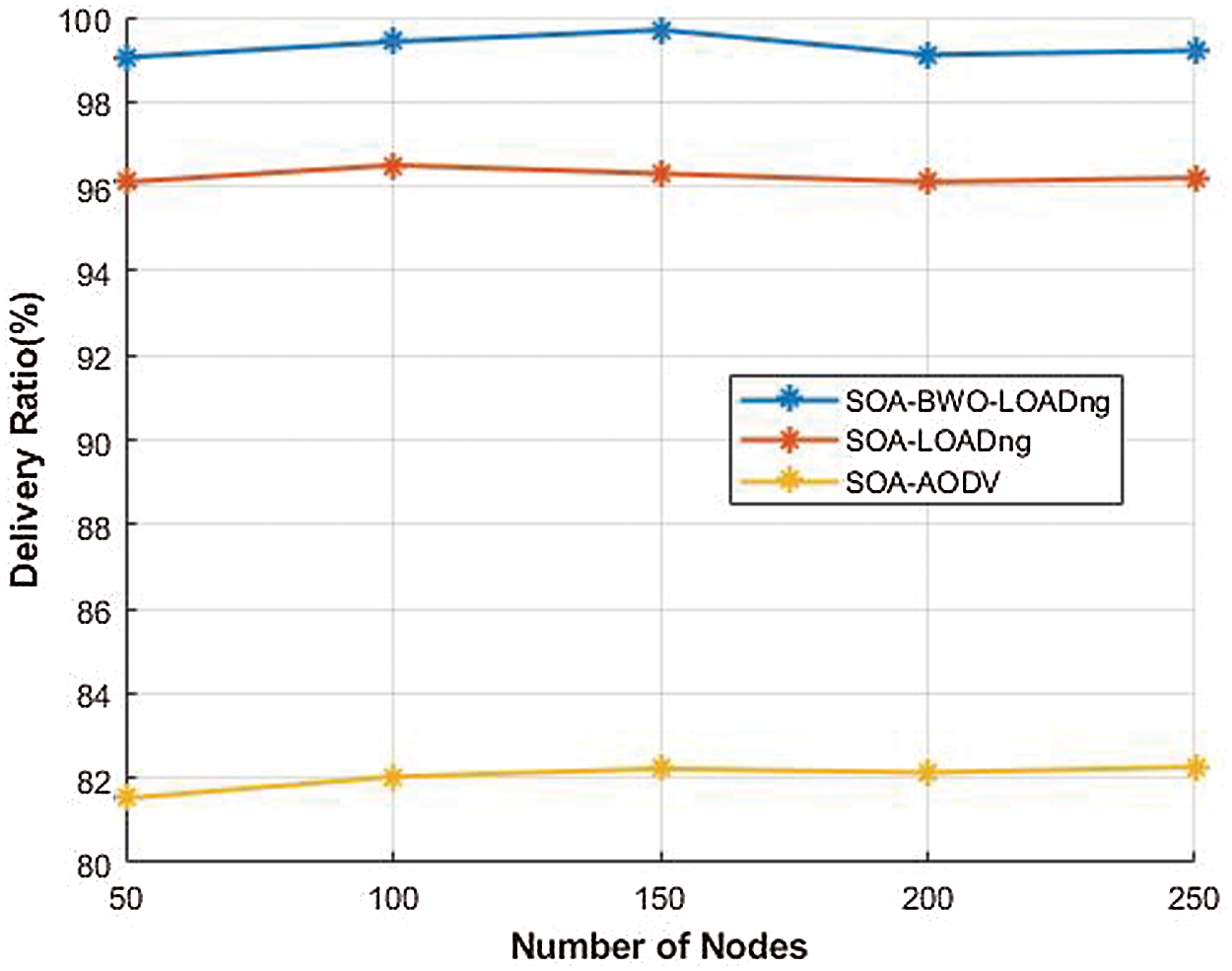
Figure 4: Performance analysis based on the delivery ratio for the different routing algorithms
Performance Analysis Based on Control Overhead
The high overhead collapses the transmission and increases the energy consumption. In Fig. 5, the performance of the proposed method is analyzed in terms of packet overhead. To prove the effectiveness of the proposed method, here, the proposed SOA-BWO-LOADng method is compared to two different routing protocols such as SOA-LOADng and SOA-ADOV In this comparison, all methods use SOA for CH selection, but the routing algorithm has changed. When analyzing Fig. 5, the proposed method attained fewer control packet overhead compare to other methods. This is because of the proposed utilized BWO-LOADng protocol.
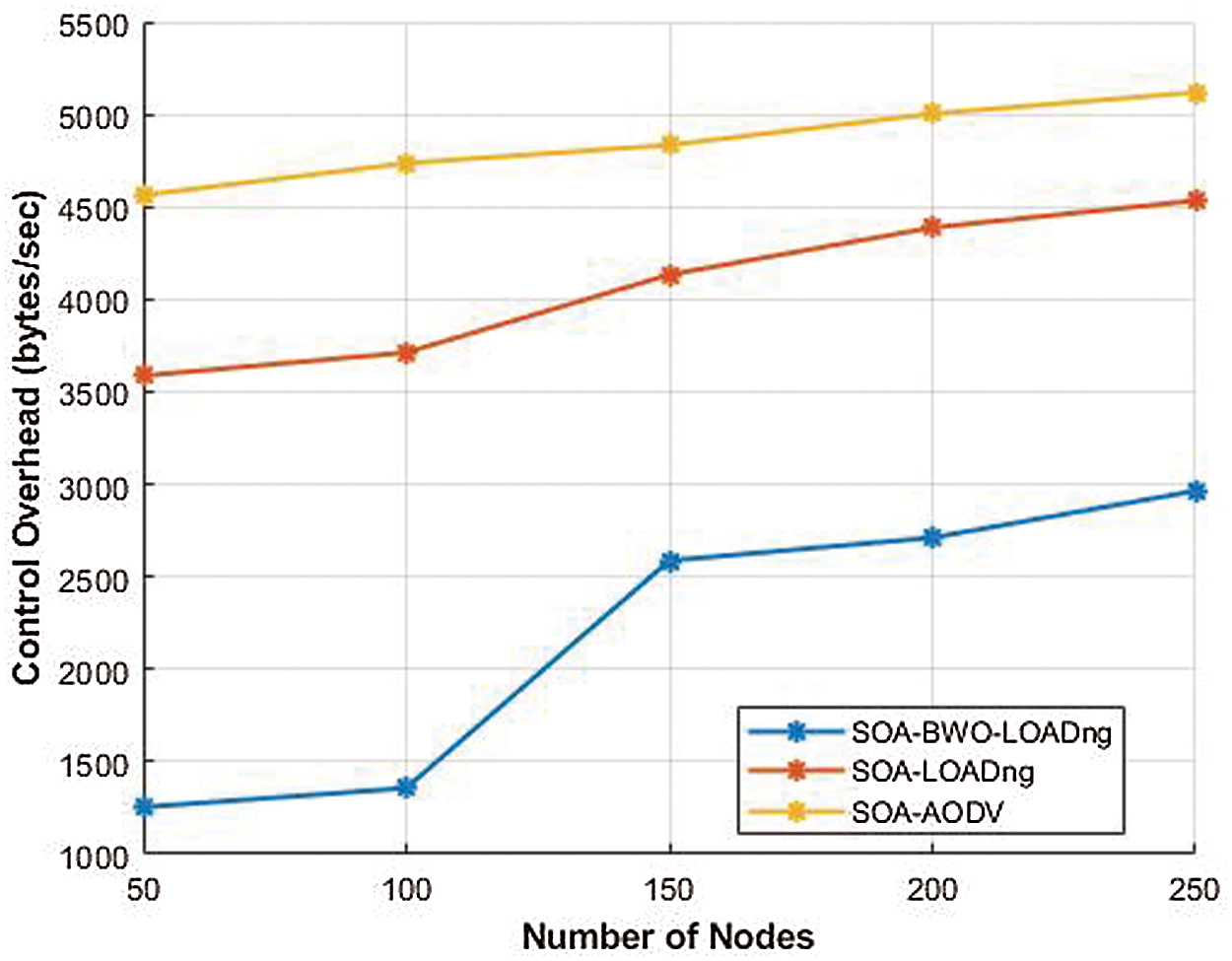
Figure 5: Performance analysis based on control overhead for the different routing algorithms
Performance Analysis Based on Delay Time
During data transfer, delays may occur due to congestion. To avoid delays, in this paper, CHs are selected using SOA to collect the data from clusters and transmit it to Destination. To demonstrate the effectiveness of the proposed method, the proposed data transfer algorithm is compared with the different routing protocols. The performance of the proposed method analyzed in terms of delay time is given in Fig. 6. When analyzing Fig. 6, compared to SOA-LOADng and SOA-AODV protocol, the proposed method attained the minimum delay.
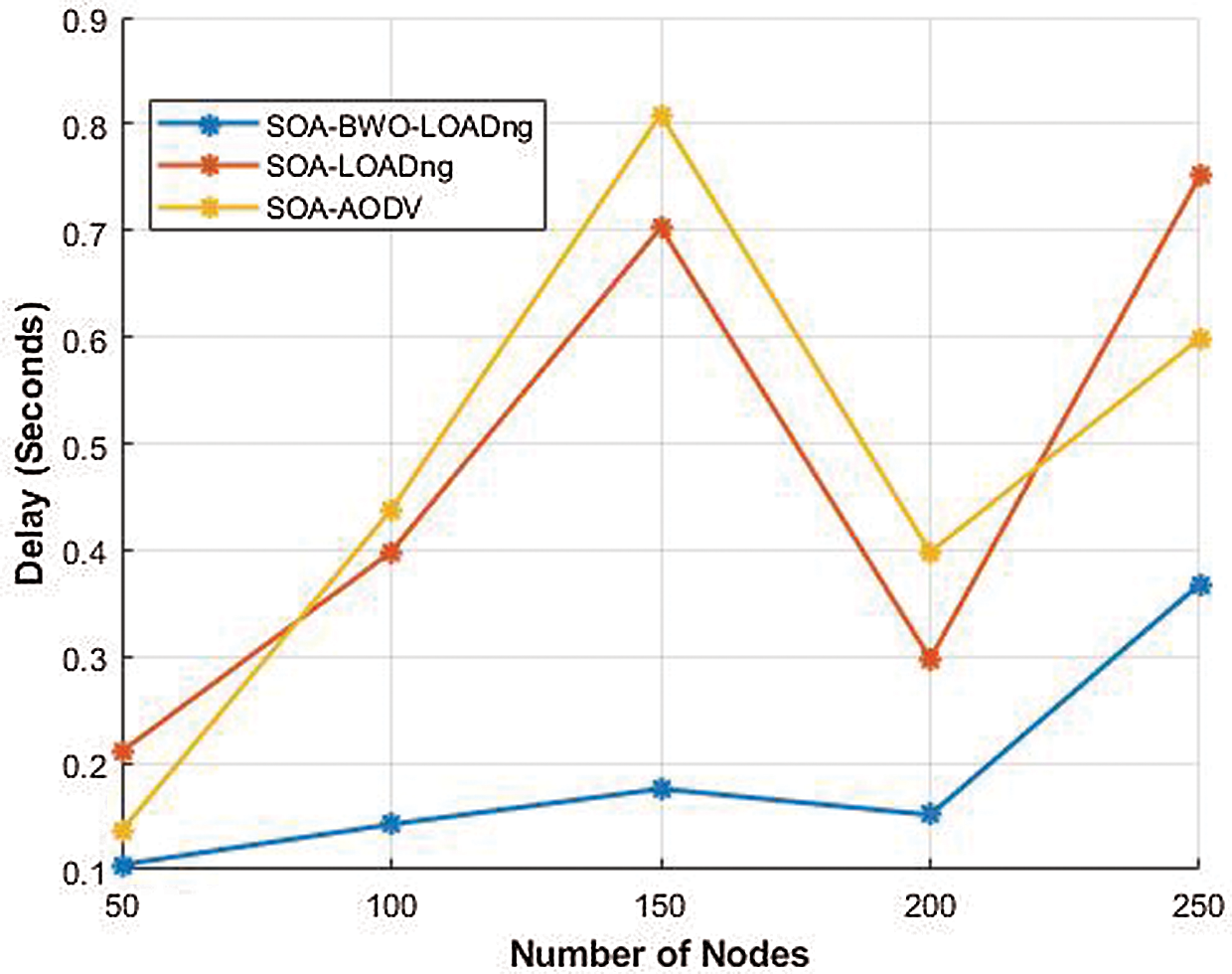
Figure 6: Performance analysis based on delay for the different routing algorithms
From the results section, it is clear that the proposed method achieved better results compared to the existing methods. This is due to SOA-based CH selection and BWO based LOADng protocol parameter optimization.
A hybrid bio-inspired meta-heuristic algorithm-based routing on WSN is proposed in this research. The goal of this strategy was to save energy and extend the life of the network. As a result, the sensors are clustered using the k-means clustering method prior to data transmission. SOA was used to pick CH in this case. The primary goal of CH selection is to reduce latency and prevent node failure. Two objective functions, such as residual energy and distant function, were used to choose CH. Finally, the BWO-LOADng algorithm was used to complete the routing. The suggested approach's performance was evaluated using a variety of parameters, including network lifetime, power consumption, delivery ratio, overhead, and delay. The suggested SOA-BWO + LOADng routing protocol achieved a maximum network lifetime of 48.90 s, a 99 percent delivery ratio, and a minimum energy usage of 60 J, according to simulation results.
Acknowledgement: The author with a deep sense of gratitude would thank the supervisor for his guidance and constant support rendered during this research.
Funding Statement: The authors received no specific funding for this study.
Conflicts of Interest: The authors declare that they have no conflicts of interest to report regarding the present study.
1. C. Schurgers and M. B. Srivastava, “Energy efficient routing in wireless sensor networks,” in 2001 MILCOM Proc. Communications for Network-Centric Operations: Creating the Information Force (Cat. No. 01CH37277), vol. 1, pp. 357–361. IEEE, 2001. [Google Scholar]
2. M. FaizanUllah, J. Imtiaz and K. Q. Maqbool, “Enhanced three layer hybrid clustering mechanism for energy efficient routing in IoT,” Sensors, vol. 19, no. 4, pp. 829, 2019. [Google Scholar]
3. L. Catarinucci, D. De Donno, L. Mainetti, L. Palano, L. Patrono et al., “An IoT-aware architecture for smart healthcare systems,” IEEE Internet of Things Journal, vol. 2, no. 6, pp. 515–526, 2015. [Google Scholar]
4. M. Dhivya and T. Parameswaran, “Smart scheduling on cloud for IoT-based sprinkler irrigation,” International Journal of Pervasive Computing and Communications, 2020, http://dx.doi.org/10.1108/IJPCC-03-2020-0013. [Google Scholar]
5. D. Chen and P. K. Varshney, “QoS support in wireless sensor networks: A survey,” in Int. Conf. on Wireless Networks, vol. 233, pp. 1–7. 2004. [Google Scholar]
6. J. Shen, A. Wang, C. Wang, P. C. Hung and C. F. Lai, “An efficient centroid-based routing protocol for energy management in WSN-assisted IoT,” IEEE Access, vol. 5, pp. 18469–18479, 2017. [Google Scholar]
7. K. Thangaramya, K. Kulothungan, R. Logambigai, M. Selvi, S. Ganapathy et al., “Energy aware cluster and neuro-fuzzy based routing algorithm for wireless sensor networks in IoT,” Computer Networks, vol. 151, pp. 211–223, 2019. [Google Scholar]
8. S. P. Singh and S. C. Sharma, “A survey on cluster based routing protocols in wireless sensor networks,” Procedia Computer Science, vol. 45, pp. 687–695, 2015. [Google Scholar]
9. P. Adhikary, P. K. Roy and A. Mazumdar, “Optimal renewable energy project selection: A multi-criteria optimization technique approach,” GJPAM (RIP), vol. 11, pp. 3319–3329, 2015. [Google Scholar]
10. S. Tyagi and N. Kumar, “A systematic review on clustering and routing techniques based upon LEACH protocol for wireless sensor networks,” Journal of Network and Computer Applications, vol. 36, no. 2, pp. 623–645, 2013. [Google Scholar]
11. K. Thangaramya, K. Kulothungan, R. Logambigai, M. Selvi, S. Ganapathy et al., “Energy aware cluster and neuro-fuzzy based routing algorithm for wireless sensor networks in IoT,” Computer Networks, vol. 151, pp. 211–223, 2019. [Google Scholar]
12. S. Bayraklı and S. Z. Erdogan, “Genetic algorithm based energy efficient clusters (gabeec) in wireless sensor networks,” Procedia Computer Science, vol. 10, pp. 247–254, 2012. [Google Scholar]
13. S. Jannu, S. Dara, K. K. Kumar and S. Bandari, “Efficient algorithms for hotspot problem in wireless sensor networks: Gravitational search algorithm,” in The Int. Symp. on Intelligent Systems Technologies and Applications, pp. 41–53, 2017. [Google Scholar]
14. P. C. S. Rao, P. K. Jana and H. Banka, “A particle swarm optimization based energy efficient cluster head selection algorithm for wireless sensor networks,” Wireless Networks, vol. 23, no. 7, pp. 2005–2020, 2017. [Google Scholar]
15. S. K. Sathya Lakshmi Preeth, R. Dhanalakshmi, R. Kumar and P. Mohamed Shakeel, “An adaptive fuzzy rule based energy efficient clustering and immune inspired routing protocol for WSN-assisted IoT system,” Journal of Ambient Intelligence and Humanized Computing, pp. 1–13, 2018. [Google Scholar]
16. S. Rani, S. H. Ahmed and R. Rastogi, “Dynamic clustering approach based on wireless sensor networks genetic algorithm for IoT applications,” Wireless Networks, pp. 1–10, 2019. [Google Scholar]
17. A. V. Dhumane and R. S. Prasad, “Multi-objective fractional gravitational search algorithm for energy efficient routing in IoT,” Wireless Network, vol. 25, pp. 399–413, 2019. [Google Scholar]
18. J. K. Jain, “A coherent approach for dynamic cluster-Based routing and coverage hole detection and recovery in Bi-layered WSN-IoT,” Wireless Personal Communication, vol. 114, no. 1, pp. 519–543, 2020. [Google Scholar]
19. P. Maheshwari, A. K. Sharma and K. Vermaa, “Energy efficient cluster based routing protocol for WSN using butterfly optimization algorithm and ant colony optimization,” AdHoc Networks, vol. 110, pp. 102317, 2021. [Google Scholar]
20. A. Vinitha and M. S. S. Rukmini, “Secure and energy aware multi-hop routing protocol in WSN using taylor-based hybrid optimization algorithm,” Journal of King Saud University-Computer and Information Sciences, 2019. [Google Scholar]
21. K. SureshKumar and P. Vimala, “Energy efficient routing protocol using exponentially-ant lion whale optimization algorithm in wireless sensor networks,” Computer Networks, vol. 197, pp. 108250, 2021. [Google Scholar]
 | This work is licensed under a Creative Commons Attribution 4.0 International License, which permits unrestricted use, distribution, and reproduction in any medium, provided the original work is properly cited. |